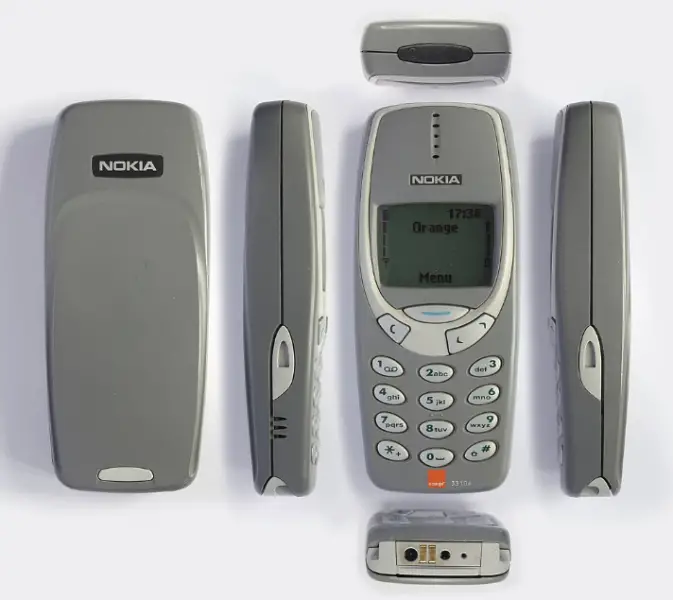Smartphones have become an essential part of modern-day life during the 21st century. Since the invention of IBM Simon, the first mobile phone, in 1992, many technological companies have been pumping out model after model. A model that becomes a viral sensation will guarantee a company’s success, while the lack of it will leave others in their shadow. Despite the efforts of many establishments, the Nokia Corporation outshined others with their creation: Nokia 3310.
Many praised the Nokia 3310 as the icon of the end of the 1990s, during the genesis of the cell phone. Its durability, affordability, and functionalities resulted in its massive popularity and sales, pioneering the smartphone market and the design of phones until the next decade. Despite more intricate cell phones being introduced into the market in the 2010s, the Nokia company revealed the revised Nokia 3310; its popularity skyrocketed overnight as nostalgia and memes spurt out.

According to the British Museum, prices for telephone calls and purchase costs were heavily lowered as technology advanced and cellular companies competed.
Many consumers, especially teenagers, desired more affordable methods of communication, so there was a massive demand for economical phones on the market. The market price of a Nokia 3310 was approximately £122.99, which is around $154, according to Mobile Industry Review. When compared to other brands, the Nokia 3310 was cheap.
Nokia Corporation, a Finnish telecommunication technology company, was one of the major cell phone manufacturers at the end of the 20th century. According to Slate, Motorola and Ericsson, also major cell phone producers in Finland, were Nokia’s main competitors, which harmed the company’s sales. However, Nokia’s recent products, such as the Nokia 3210 and 5110, fended off competition with more advanced technology.
Recognizing a huge demand for cost-effective cell phones, Nokia decided to make a new model based on the moderately successful Nokia 3210. The design team emphasized the functionalities and ergonomics of the phone, as consumers will be using their devices for long periods of time. Battery life is also an aspect that the Nokia development team addressed, as consumers do not want to recharge their phones, especially during the day. Moreover, the materials used for the phone are durable, yet affordable to highlight its viability.
Not much is known about the design and production of the Nokia 3310, but the Nokia 3310 went public on the 1st of September, 2000, according to TechRadar.
The Indestructible
After the release of the Nokia 3310, many regular Nokia users were amazed by the design and functionalities of the model. The simplistic interface and round casing made the phone appealing to many users. According to Vice, Nokia had projected that 20 million units would be sold, however in actuality, 126 million were sold. This makes the Nokia 3310 one of the best-selling cell phones during the 2000s.
During the 2000s era, SMS (short message service) was one of the most common ways of communication due to low costs, easiness, and widespreadness. However, the system limited a selected amount of characters in a post, often requiring a user to send many messages to get the context across. To resolve this issue, the Nokia 3310 contained a new ‘Chat’ function which allowed longer messages (459 characters).
Additionally, many utilities were uncommon in cell phones, such as a calculator, network monitor, timer, or even a task reminder. Customization was also present in this model, allowing users to modify their wallpaper, case, or ringtone.
A Nokia 3310 contains four games: Pairs II, Space Impact, Bantumi, and Snake II. Many mobile games during the era were rustic and boring, yet Snake II proved to be one of the most recognizable games of all time. Due to its simplistic and addictive nature, this game had a huge player base, resulting in increases in sales of the Nokia 3310.
All of these features made the Nokia 3310an icon of the early 2000s as many purchased it due to the skyrocketing trend and affordable price. As other phone companies released more refined and sleeker models, especially the first iPhone, Nokia discontinued the production of the Nokia 3310 in 2005 to focus on other ventures, according to Techpoint Africa.
Despite this, the Nokia 3310 remained in many users’ nostalgia due to its impact on many cultures. It cemented its legacy in many pieces of media, such as movies, television shows, and literature.
The New Legend Rises
After 12 years of discontinued production, Nokia, now known as HMD Global announced a digitalized rendition of the Nokia 3310 at the Mobile World Congress (MWC) in 2017, according to CNET. The new market price of the updated Nokia 3310 in 2017 is £35, which is even cheaper than the old version.
The up-to-date Nokia 3310 has almost the same physical designs as the original one, except for the colored 2-megapixel screen, camera, expandable storage, and sleeker hardware that somehow improved the durability of the phone. The software is updated to fit a new generation of users, improving the function quality and including support for 2G signals. While many criticized the phone for not including better networks, such as 3G or 4G, Nokia soon released newer models that could handle new types of networks.
The new Nokia 3310 received mixed reviews. While some appreciated its throwback design and the inclusion of many features, especially the Snake game, others disliked its limitations compared to modern smartphones due to the lack of sophisticated functions. The phone’s appeal was largely based on its nostalgia factor and its positioning as a secondary, backup phone rather than a primary device. However, for some, the phone allowed many to escape the bustling World Wide Web…often difficult in the modern world.
By David Jay
